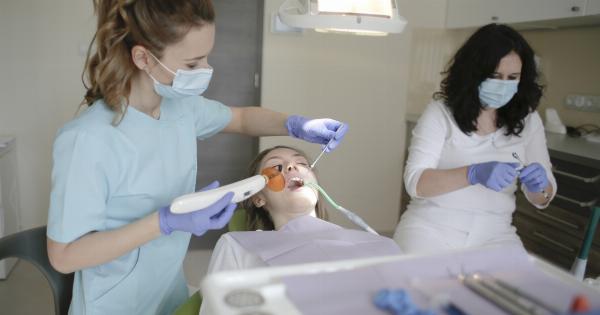Colon and rectal cancer, collectively known as colorectal cancer, have seen a startling increase in rates over the past few decades.
This rise in prevalence has left medical professionals and researchers puzzled, as colorectal cancer was previously considered a disease of the elderly. However, recent studies have shown that this cancer is affecting younger individuals at a disproportionately high rate.
In this article, we will explore the surprising increase in colon and rectal cancer rates and discuss potential factors contributing to this concerning trend.
The Changing Demographics
In the past, colon and rectal cancer were primarily diagnosed in individuals over the age of 50. However, alarming evidence suggests that younger adults, even those in their thirties and forties, are now being diagnosed with this deadly disease.
According to a study published in the Journal of the National Cancer Institute, the incidence of colorectal cancer among adults under 50 has been increasing by 2% per year since the early 1990s.
Lifestyle Factors
Several lifestyle factors have been implicated in the rise of colon and rectal cancer rates. Sedentary lifestyles, diets high in processed foods and red meat, and obesity have all been identified as potential contributors to this disease.
Lack of physical activity and unhealthy dietary choices can lead to obesity, which, in turn, increases the risk of developing colorectal cancer.
Genetic Factors
While lifestyle choices contribute significantly to the development of colon and rectal cancer, genetic factors also play a role.
Individuals with a family history of colorectal cancer or certain genetic syndromes, such as Lynch syndrome, have an increased risk of developing the disease. Genetic testing and counseling can help identify individuals who may be at a higher risk and enable early detection and preventive measures.
Impact of Environmental Factors
Environmental factors, such as exposure to certain chemicals and pollutants, may also be associated with the rising rates of colon and rectal cancer.
Studies have shown that individuals exposed to high levels of air pollution, industrial chemicals, and pesticides may have an increased risk of developing this cancer. Further research is needed to fully understand the relationship between environmental factors and colorectal cancer.
Screening Guidelines and Awareness
Efforts to increase awareness and improve screening guidelines have also influenced the rising rates of colon and rectal cancer diagnoses.
Healthcare providers are now better equipped to recognize the symptoms and risk factors of colorectal cancer, leading to more frequent screenings and early detection. While increased awareness has undoubtedly aided in detecting cases, it does not fully explain the dramatic increase observed in recent years.
Role of Microbiota
The human microbiota, the diverse community of microorganisms residing in our gut, has gained attention for its potential influence on various aspects of health, including cancer.
Studies have shown that alterations in the gut microbiota composition, often caused by poor dietary choices and the use of antibiotics, may contribute to the development of colorectal cancer. Understanding the interplay between our gut microbiota and cancer development could offer new preventive and therapeutic strategies.
The Impact of Economic Development
The rise in colon and rectal cancer rates is not limited to developed countries. Developing countries are also witnessing an increase in colorectal cancer cases.
The globalization of unhealthy dietary patterns, sedentary lifestyles, and environmental pollution can be attributed to the growing prevalence of this disease worldwide. As economic development continues, efforts to educate and promote healthier lifestyles become imperative to curb this worrying trend.
Advancements in Treatment Options
Despite the concerning increase in colon and rectal cancer rates, there have been significant advancements in the treatment of this disease.
Improved surgical techniques, targeted therapies, and immunotherapy have revolutionized the management of colorectal cancer. Early detection, combined with these treatment options, has led to improved survival rates and better quality of life for those affected.
Prevention and Early Detection
Prevention plays a crucial role in combatting the alarming increase in colon and rectal cancer rates.
Adopting a healthy lifestyle, including regular exercise, a balanced diet rich in fruits and vegetables, and avoiding excessive consumption of processed foods and red meat, can significantly reduce the risk of developing this cancer. Additionally, adhering to recommended screening guidelines based on individual risk factors is vital for early detection and prevention.
Conclusion
The unexpected surge in colon and rectal cancer rates, particularly among younger adults, demands immediate attention.
Lifestyle choices, genetic factors, environmental exposures, and the impact of economic development all contribute to the rising prevalence of this disease. Whereas improved screening and treatment options offer hope for those affected, prevention through education and conscious lifestyle choices remains the most powerful tool against colorectal cancer.





























